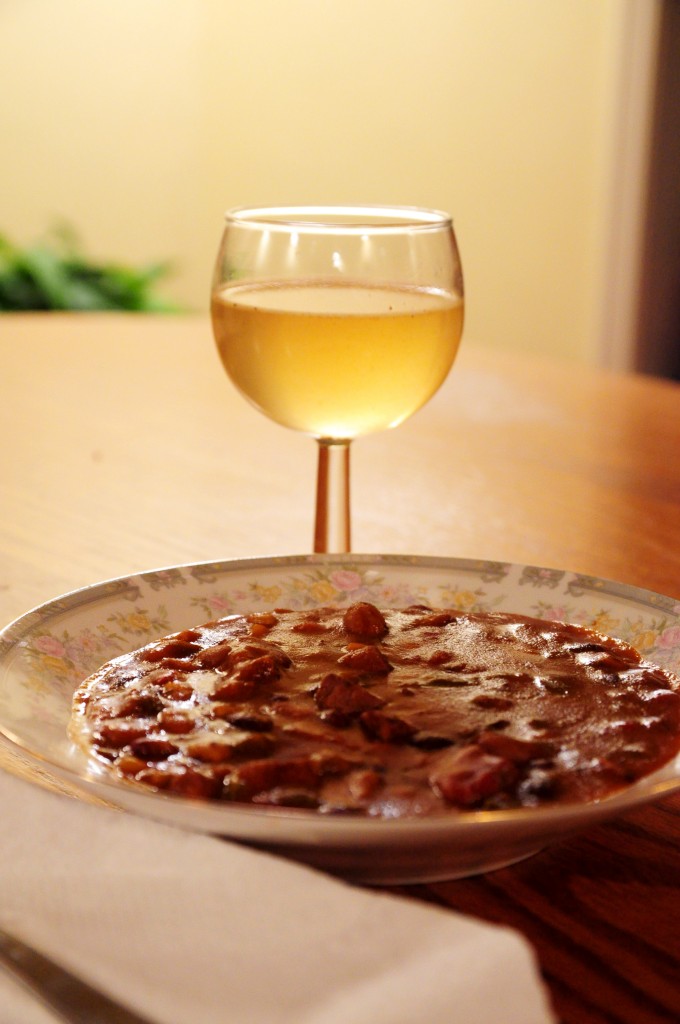
Chili is a food with a rich past. That backyard-and-tailgate-tested ambrosia of meat and spices has a history that’s degrees more humble than one would expect of a food that is commonly smothered over stuff just for the sake of smothering — often in some sort of strange notion of “man-food” over “man-food.”
Yet it’s wrong to call chili “man-food,” and in fact it’s wrong to call any food “man-food” or, for that sake, “woman-food.” The thing about chili is that it arose out of necessity and only after some decades of world economic success did a sizable amount of certainly passionate people in this country begin to boast that their meat-lined, blackened pot of spicy ooze was better than the next (guy’s).
The geographical origins of chili and “the best bowl of chili” are the constant topics that arise in what may be called the “chili debate,” the kind of thing you’d see on the Food Network. However, these two points obfuscate the real reason the food is important. When people are hungry, they don’t eat or make food because they believe it to be the proper, original or best recipe, nor do they pugnaciously defend their state’s claim of being the originator of the dish — they make food because they need to eat. Chili has survived because it tastes good (enough) and its recipe is this: chopped-up meat, chilis, onions, garlic and other stuff. Basically, the meat was protein, which diminishes hunger, the onions provided a little sugar and flavor when rendered and the garlic and spicy chilis provided flavor to enhance the meat. By enhance, this sometimes meant covering up for the fact that the meat was spoiled … or was actually armadillo, rattlesnake or some other beast from the southwest — which is, by the way, the place where chili originated. Where actually? Who cares? Don’t get distracted. These ingredients were available pretty much everywhere. As far as the other stuff, like beans and tomatoes? They came into the equation sometime. Why? Because you can eat them, they can taste fine and additional ingredients mean that more people can eat.
So like a rancher in Texas, for example, a college student can get a lot from a bowl of chili. The most common primary ingredients are still cheap and available everywhere. Other “additional” ingredients and changes to the “recipe” are welcome because that’s what chili is. And its tradition isn’t so much to be something particular, but, more gracefully, to feed.
Look for recipes, experiment with what you like. Common recipes are quite balanced nutritionally, especially when they include beans and tomatoes or other vegetables. Take ingredients that will ward off the chills of autumn, like cumin and Cajun spices. There’s simply no debate worth the time, just heed chef/writer/TV host/human Anthony Bourdain’s reflective musing: “For me, if there’s a perfect meal in this life and in this world, chances are it’s just a bowl of something good.” Eat something good, a bowl of it.
Recipe: “This-Weekend-This-is-the-Chili-I-Made”
– (2-3) onions, chopped
– (4) cloves garlic, minced
– 2/3 lb ground beef
– 1 1/3 lbs beef sirloin (regular, top or bottom cut), cubed
– (1) can of peeled tomatoes – diced, whole (squeeze them out), etc.
– (12 oz) Dark beer – [I used Guinness, any stout would work. Some stouts are flavored with things like cocoa and cayenne, I would recommend using something like that if you have it]
– (1) cup, (that’s 8oz) of Coffee. Dark too, I used Café Bustello.
– (2) 6 oz cans of tomato paste
– 14 oz beef broth
– (1/2) cup brown sugar [I used pourable light brown sugar. It’s really useful and doesn’t clump over time]
– 3 ½ tbsps chili powder
– 1 1/2 tbsp cumin powder or less of cumin seeds
– 2 tsp dried oregano
– 1 ½ tsp celery seed
– 1 tbsp Cajun mix (cayenne pepper would work too)
– Couple long squirts of Sriracha chili sauce (the green-topped bottle with the rooster on the bottle) or some other hot sauce. [This is a sub for salt on one hand and just more good spice flavor on the other]
– (4) 15 oz kidney beans [or other beans, who cares]
– (4) fresh hot chili peppers. Seeded for less hot, chopped [I used two jalapenos and some other little red peppers I got from the farmer’s market, this mix didn’t make it that hot. For significant heat, I’d throw in a habanero]
Place cubed beef, ground beef and onions and garlic in the pot over medium heat. Cook until the meat is brown, about 10 minutes. Add can of tomatoes, tomato paste, beef broth, beer and coffee as well as the dried spices, hot chiles and two of the cans of beans. Stir together and let it simmer for 1 ½ hours. Add the remaining beans, then cook for another 30 minutes. Serve on its own or with simple boiled potatoes and attempt to eat more than a bowl and a half. Save and reheat, it tastes even better days after.


